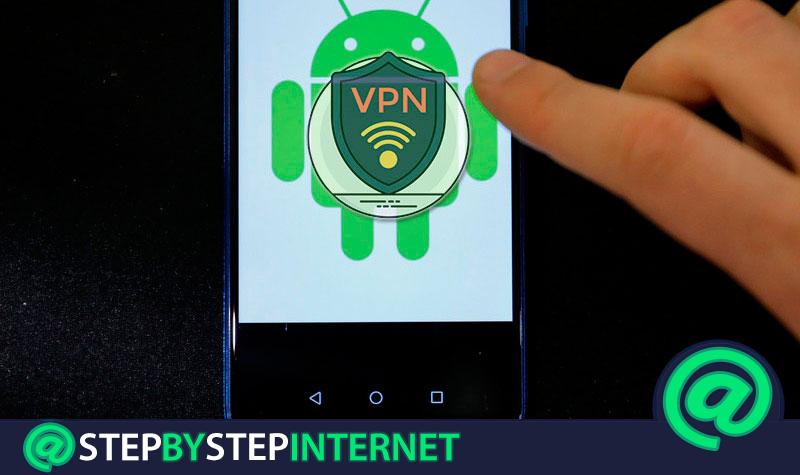
VPN (Virtual Private Network) is a connector that allows, through a secure extension, the connection of a device to networks on the Internet, allowing them to be sent and receive encrypted data to protect information and location of the user while connected to a public or private network.
This same security system can also be integrated into our Smartphone so that, when connecting to any Wi-Fi network, nobody can steal our data as they will be encrypted. In addition, it would prevent showing the real location where we are because the VPN would disguise our IP address .
Although the networks used by our mobiles, whether public or private, are quite secure, it is worthwhile to apply certain measures to prevent our information from being used by unauthorized agents. That is why Android has allowed to establish these types of connections. Next we will talk a little more about it and explain how to configure, create and connect to a VPN from your Android phone , step by step with the protocols to do it.
Index:
What is a VPN on your Android Smartphone?
As we have explained above, a VPN is a support that allows us to securely configure our internet connection, as it encrypts the information transmitted while browsing. In this way, when we access certain pages, our IP will be protected from possible theft of important data .
This technology is usually used in companies so that their workers continue their work from home, since by encrypting their private IP they can connect to the corporate network masked their location and can access their resources without problem whatsoever.

One of the advantages to using a VPN connection is the inability to trace because our IP is “disguised” every time we connect to the network, this allows us to access information that is only available in certain countries for example when downloading certain applications, software or files.
However, it must be taken into account that there are many services that are not so reliable and allow them to track our information, such as “remembering” our passwords . When this happens they are really making a usage statistic and profiles that they can sell to certain advertising or consumer agencies.
Another thing to consider is that when encrypting our data the information is doubled and therefore the internet consumption , so having a slow connection, the browsing speed becomes even less. However, there are many reasons to maintain the use of connections of this type.
For example, when we travel and want to enter the web with our cell phone and our IP address will automatically be blocked for not being authorized being a necessity to have a VPN connection on our device or in another case where you just want to connect to international services to access and download the information without being blocked.
But the most important thing of all is to maintain the protection of our data by constantly browsing the internet because even if we only use a private network we run the risk of being tracked, which encourages us to use these extensions, which use The following protocols to work:
- PPTP / MPPE : This server works using the Microsoft Point to Point Encryption (MPPE) protocol. Its encryption capabilities are 40 bit and 128 bit.
- L2TP / IPsec : It is competent to provide the level of protection thanks to its L2TP tunnel protocol, but it does not encrypt the information by itself.
- IPsec : known as Internet Protocol Security, it has two encryption methods: transport and tunnel . You can encrypt up to 56 bit and 168 bit (triple DES) which allows better security through algorithms a more absolute authentication system.
The protection of your data is based on encryption, that is, encryption encryption and to achieve this a mechanism is used that detects any modification within that encryption discards any anomaly.
Now, this technology also applies to your Smartphone, as many people have software that works as an antivirus but having a VPN is very complementary because will keep you protected when connecting to public Wi-Fi networks . That is why Android has for a long time the possibility of creating a private network from the device.
Although on the other hand, you can also download an application that fulfills this function . Usually the applications that offer VPN services are responsible for encrypting your information and its configuration is very simple and we will explain it below.
Steps to create and configure a Virtual Private Network on your Android device
Using a VPN provides security to our information while we are browsing the web, but Android has made things easier for you and you can easily configure your cell phone.
Here we show you step by step how to do it :
- Open the equallyAdjusted securities.
- The “Wireless and networks” options will be displayed there you will dial “More ».

- Then select the “VPN” option.

- You will check the «Add» option and choose the type of VPN Network.

- Then you will be asked for some information such as the name (you can type VyprVPN), in the «Type» field and check the PPTP option, then enter one of the following Server Host names . To continue select permittedSave through.

You can choose from some of the following server Host names:

- To connect again open «Settings»> «More» > «Wireless and networks» > «VPN» to open VyprVPN option.
- The system will ask you to enter your username and password, when finished select “Save”. You must remember the use of capital letters and lowercase to enter the password.

- Finally, check the «Connect» option and you’re done. This way your device will be protected by a VPN.
Now, through this process we can navigate safely on our mobile. But remember that there are many applications that offer VPN services with an automatic procedure when installing the application, making this task much easier.